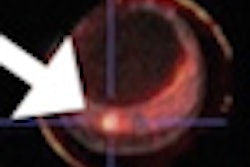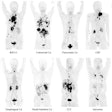Dear AuntMinnie Member,
The creation of the Framingham risk score was a major step forward in enabling physicians to better manage patients by giving them a tool to predict heart disease in asymptomatic individuals. As CT lung screening edges toward clinical viability, imaging specialists are looking for a Framingham-type yardstick that will permit better selection of who should receive the scans.
We bring you one potential candidate this week in our CT Digital Community. A multinational team from the U.S. and U.K. developed a model for predicting risk for lung cancer that they believe will make CT screening more effective than the current one-size-fits-all approach, or even a model based on individual risk factors such as smoking duration or family history.
The investigators tested their new model in three different databases and found that it worked well. Learn more by clicking here.
Also check out a story on how an iterative reconstruction technique reduced radiation dose in urinary stone disease by clicking here, or visit the CT Digital Community at ct.auntminnie.com
PET/CT's growth rate slows
In other news, the growth rate of PET/CT continues to slow, reflecting a long-term trend, according to a new market research report we're highlighting this week in our Molecular Imaging Digital Community.
The analysis by market research firm IMV Medical Information Division found that PET and PET/CT procedure volume hit 1.85 million exams in the U.S. last year, up 6%. That may sound good, but the growth was driven almost entirely by new PET/CT sites -- volume at existing sites edged up less than 1%.
What's more, even the 6% growth rate represents a drop from the rates experienced five or so years ago, when the modality experienced double-digit growth rates. Find out more by clicking here, or visit our Molecular Imaging Digital Community at molecular.auntminnie.com.




















